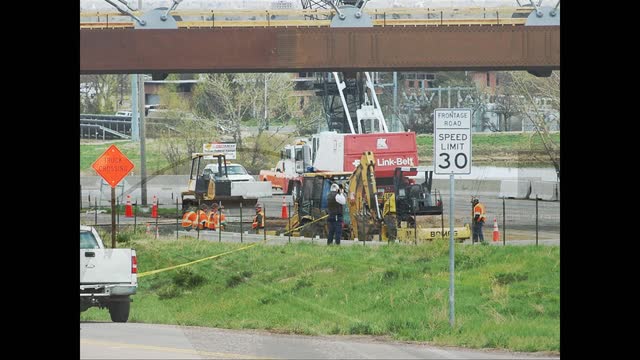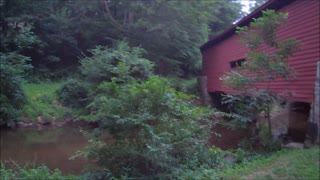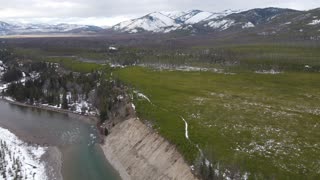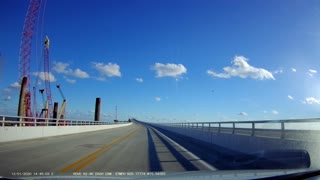Premium Only Content

20100501: 6th Ave Bridge Installation, Photo Slideshow
1 May 2010: This photo slideshow video is an extraction from my 17-minute original video shot on 1 May 2010 beginning around 2:30pm at the site of the 6th Ave RTD Bridge installation here in Lakewood, CO.
The information below was supplied by RTD:
RTD's FasTracks
The 6th Avenue Bridge
West Corridor at a Glance
The West Corridor light rail project is part of FasTracks - RTD's voter-approved 12-year comprehensive plan to expand quality transit service in the Denver metro region.
The West Corridor is a 12.1-mile light rail transit corridor extending from Denver Union Station to Jefferson County, through Denver, Lakewood, and Golden.
Twelve stations are proposed for the West Corridor including Auraria West, Decatur/Federal, Knox, Perry, Sheridan, Lamar, Wadsworth, Garrison, Oak, Federal Center, Red Rocks Community College and Jeffco Government Center.
The ridership projection is 29,700 per day by 2030.
Major construction began in 2009 with the line projected to open in 2013.
Part of this effort includes a bridge designed to span over 6th Avenue between Kipling and Simms/Union in Lakewood.
The Bridge
Structure: The structure is 286' long and 65' tall from top of crown to bottom of floor beam. It contains about 1.2 million pounds (600 tons) of structural steel and approximately 55,000 high-strength structural bolts. The arches and cables provide the majority of the structural support for the bridge. The maximum width of the bridge is 43 feet, and it will carry two light rail tracks. The type of high-strength steel used is called "weathering steel." It will naturally rust to a dark purple-brown color to form a protective oxide coating, thus eliminating the need and expense of painting, now or in the future. The weight of the tracks and ballast crossing the bridge weighs more than all the bridge's structural steel. The structure can withstand a sustained hurricane force wind of 100 mph. Each of the main pier columns is designed to support 2.7 million pounds. The substructure supporting the span contains 10,686 cubic feet of concrete weighing about 1.6 million pounds.
Arches: The arches angle inward so that the width of the arches at the ends of the bridge is 43 feet while the width of the arches at the crown is 16 feet. Each arch is designed to withstand a compressive force of nearly three million pounds. The hollow arches have full interior access to facilitate construction, future inspections, and maintenance. From extreme cold to extreme hot, the arch span will elongate approximately 3.5 inches. The steel arch span is supported on its own bearings on the two piers adjacent to 6th Avenue and is not directly attached to the approach spans. There are expansion joints at each end of the arch span to compensate for movement caused by temperature changes. The shape of the arch is defined by a mathematical equation which emulates the equation used to describe the force of gravity.
Cables: There are a total of 44 cables on the bridge, approximately 1,950 feet. Each cable is 2 3/8" in diamter. Each cable has a breaking force of 688,000 lbs (344 tons). If one cable breaks, which is very unlikely, the bridge can still support itself. The cables will be lit with white LED lights, which have a lifespan of 100,000 hours, or about 11 years.
Construction
The arch bridge was constructed and fully assembled at the manufacturer's site in Oregon. It was then disassembled and transported to Colorado in 34 truck shipments. The transporter consists of two 35' transport platforms having 8 axles each. Both of these transport trailers contain hydraulic rams used to keep the platform level. The southern end of the arch will travel on guided rollers which are pushed by hydraulic rams, the main driving force. This is the first time in the U.S. that a basket-handled tied arch bridge has been 'rolled out' using this method.The bridge will move less than 25 feet per hour across 6th Avenue, taking up to 30 hours to complete the crossing.
The bridge was rolled across 6th Avenue on Saturday, May 1, 2010. All lanes of 6th Avenue were scheduled to be closed between Kipling and Simms/Union in Lakewood from Friday night, April 30th, to Monday morning, May 3rd, 2010. Many intending to view this event were caught off guard by the fact that this effort was completed 30 hours ahead of schedule, with the bridge having been set on its pillars at around 4:00pm Saturday, the 1st of May 2010.
-
 9:24
9:24
namja1802
4 years ago $0.02 earnedHarry and Kharen - Prenup Photo Slideshow
68 -
 3:35
3:35
Joe_The_Fenceman
4 years agoBartram Ave Covered Bridge
21 -
 0:10
0:10
EntertainmentVideos
4 years agoBridge *
36 -
 0:07
0:07
easytosmile
4 years agoBridge 8
761 -
 0:43
0:43
Heather2000
4 years agoWooden Bridge!
46 -
 0:21
0:21
Uniquelydes
4 years agoMackinaw Bridge
171 -
 1:38
1:38
Rebooter
4 years agoBlankenship bridge
681 -
 3:09
3:09
GarySomeBody
4 years agoBasnight Bridge
74 -
 0:17
0:17
karmapas
4 years ago $0.01 earnedBridge - China
58 -
 0:05
0:05
WakkiJ
4 years agoBakers Bridge
80